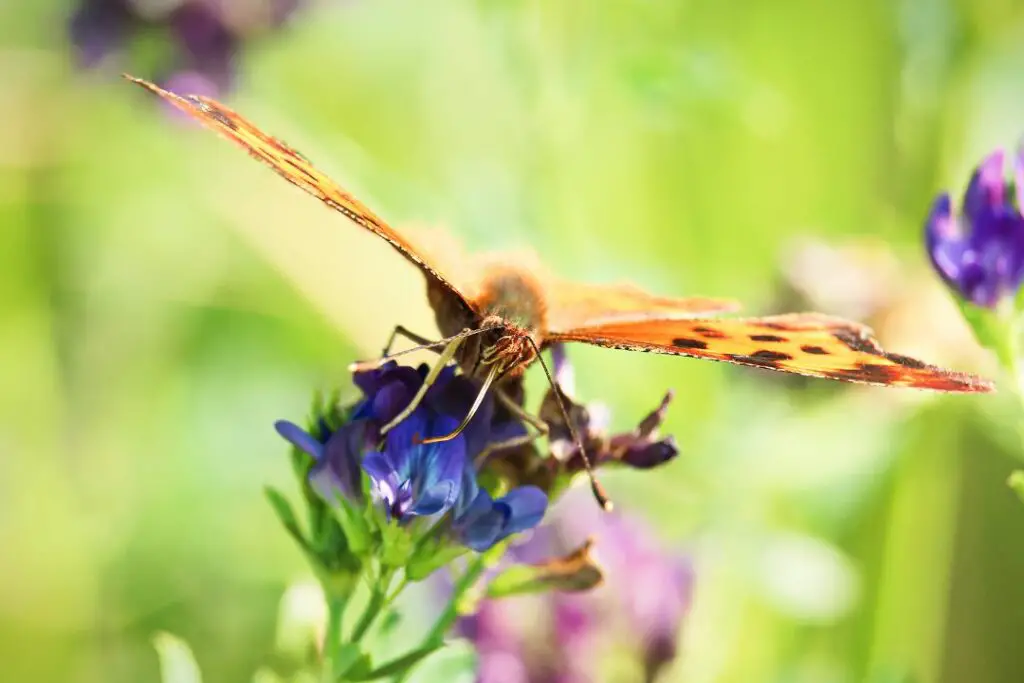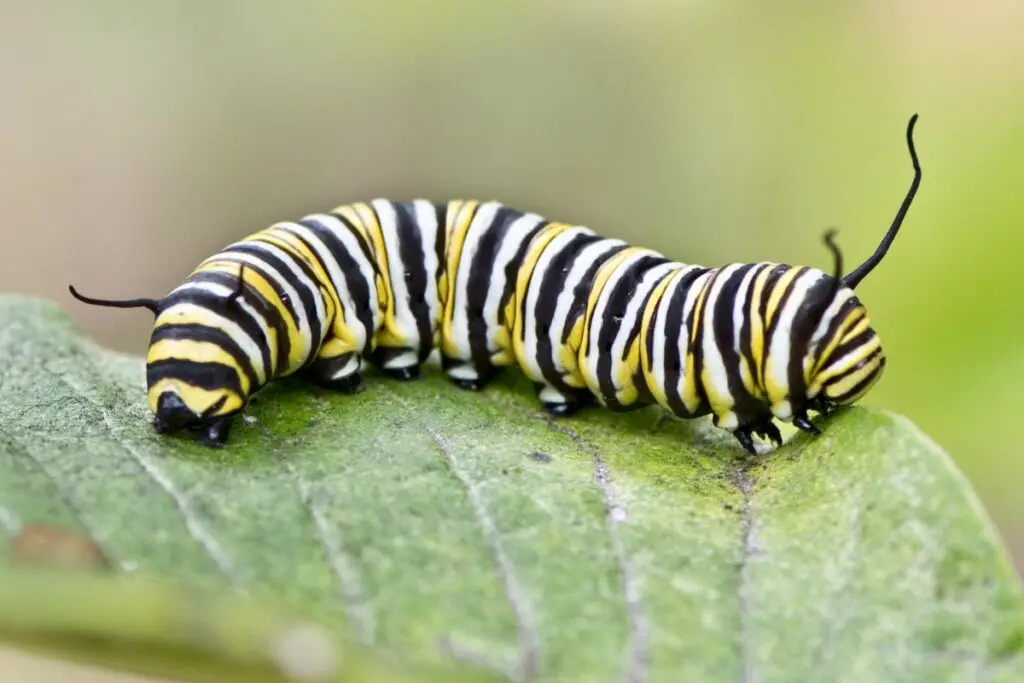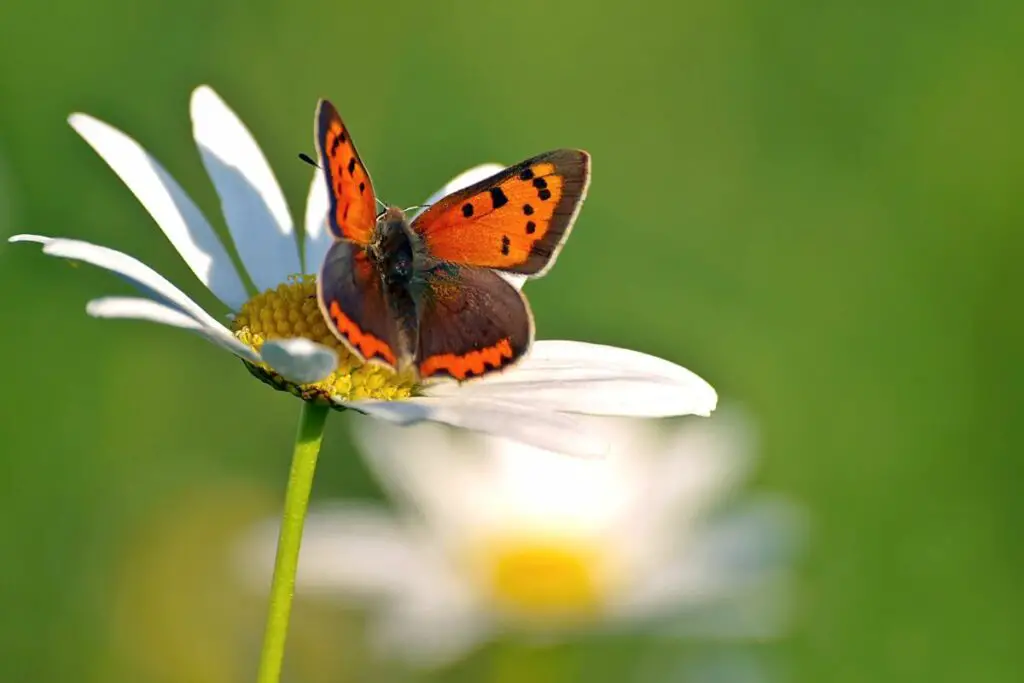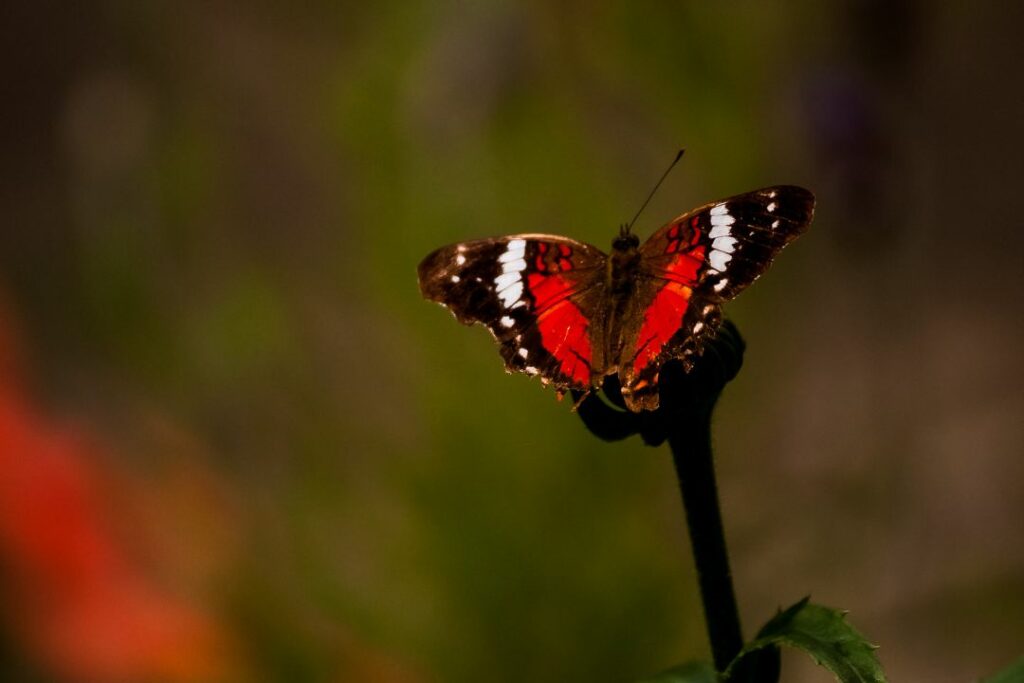No, butterflies do not have teeth. Instead, they have a long tongue-like appendage called a proboscis, which they use to drink nectar from flowers.
Now, while butterflies can’t bite and chew their way through flowers, they are perfectly equipped to collect the sweet prize contained within.
Let’s take a look at how butterflies eat without teeth and the amazing biology they use to do it.
The Anatomy Of A Butterflies Mouth
Have you ever stopped to ponder the intricacies of a butterfly’ mouth? Unlike many creatures we’re familiar with, butterfly species have a unique feeding mechanism that’s as fascinating as it is functional.
The most prominent feature is the proboscis. Think of it as nature’s version of a retractable straw to suck up liquids. When unused, the butterfly coils it up, tucking it neatly against its head.
But when it’s time to feed, the proboscis unfurls, allowing the butterfly to reach deep into flowers to sip nectar.
This slender, tubular structure is a marvel of natural engineering. It’s not just a simple tube; the proboscis is made of two halves that can be zipped and unzipped, enabling efficient feeding and cleaning.
This design allows butterflies to access nectar from various flowers, ensuring they have the energy to flutter about.
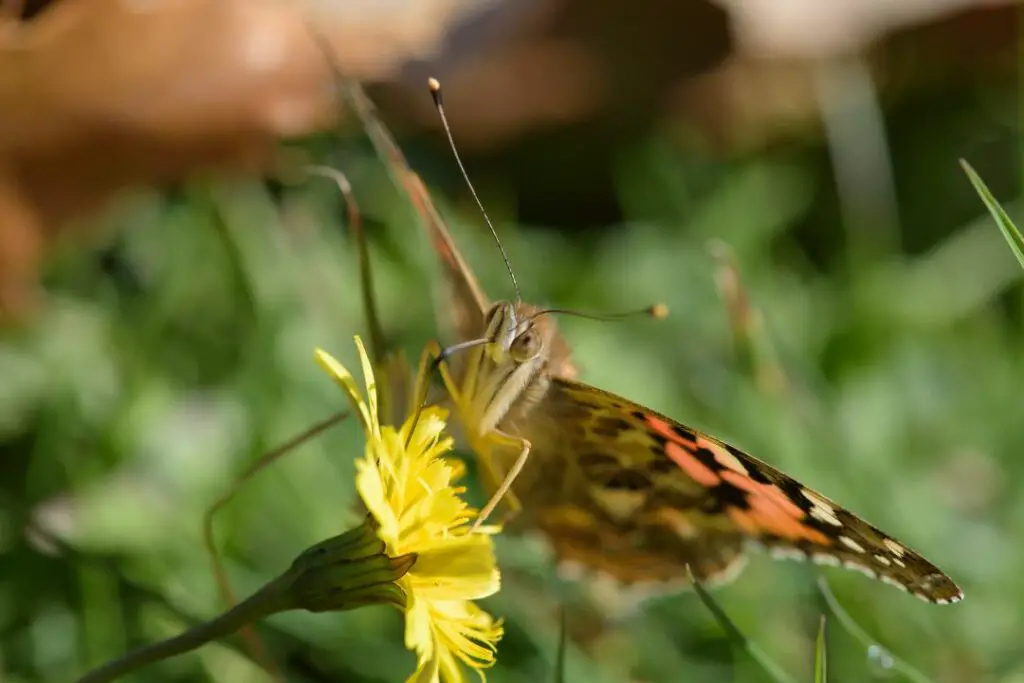
Debunking the Myth: Do Butterflies Have Teeth?
First and foremost, butterflies do not have teeth like mammals do. Instead, they have a specialized mouthpart called a proboscis, designed for sipping nectar. But, the insect world is vast, and some insects possess something resembling teeth.
Dragonflies have mandibles with tooth-like serrations to grasp and crush their prey. Similarly, crickets have strong jaws with sharp edges, which they use to chew through plant material.
Find out more about the caterpillar to butterfly lifecycle and transformation here.
The evolutionary tale
The evolution of the butterfly’s mouthparts is a tale of adaptation and survival. Early ancestors of butterflies, much like modern-day moths, had chewing mouthparts. As these insects evolved and diversified, some began to specialise in feeding on the nectar of flowers.
Over time, the need for chewing diminished, and the proboscis, a more efficient tool for sipping nectar, developed.
This shift in feeding habits can be observed in the real world. The Hawkmoth, for instance, has an exceptionally long proboscis, allowing it to feed on flowers with deep tube-like structures, like the trumpet vine. This co-evolution between flowers and pollinators showcases nature’s incredible ability to adapt and find balance.
While butterflies don’t have teeth in the traditional sense, their evolutionary journey and the diverse mouthparts of the insect world are a testament to nature’s ingenuity.
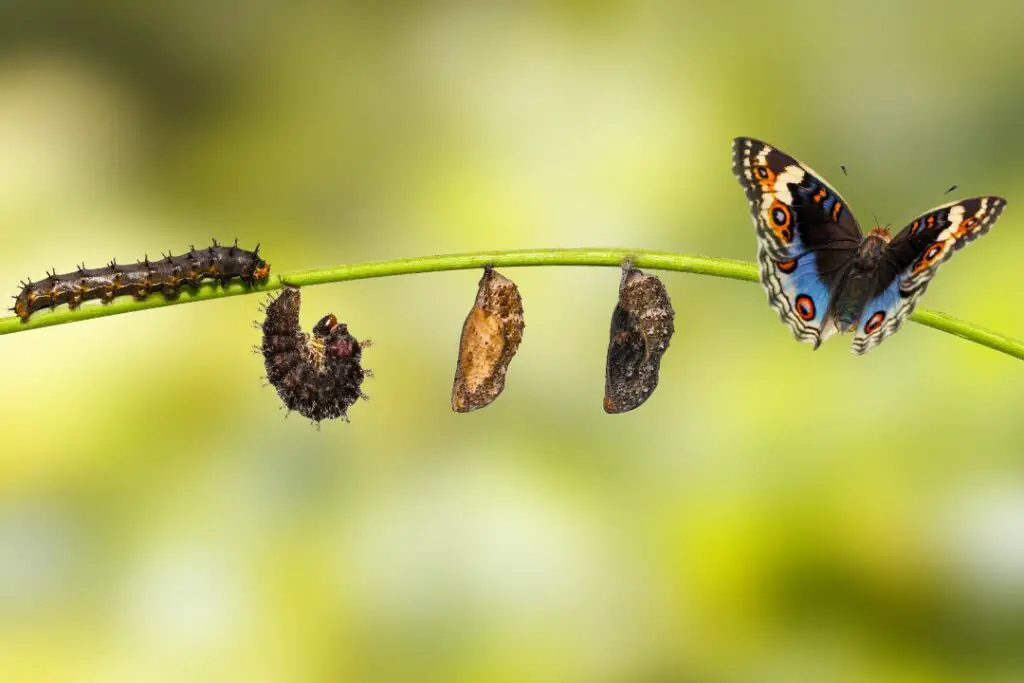
Do Catepillars Have Teeth?
While adult butterflies may not have teeth, their larval stage—caterpillars—has a different story.
These little munchers have specialized mouth parts to consume leaves, stems, and sometimes other insects. Let’s explore how these “teeth” work and why they’re crucial for a caterpillar’s survival.
Nature’s pair of scissors
Caterpillars have a pair of strong, jaw-like structures called mandibles. These aren’t teeth in the traditional sense, but they serve a similar purpose: cutting and grinding food.
The mandibles work in a scissor-like action, slicing through leaves with remarkable efficiency.
The monarch caterpillar
Take the Monarch caterpillar, for example. These little guys are milkweed specialists. They use their mandibles to cut through the tough fibres of milkweed leaves, their primary food source. T
The mandibles are so effective that they can consume an entire milkweed leaf in hours!
The role of maxillae and Llabium
In addition to mandibles, caterpillars have other mouthparts called maxillae and a labium—these help to manipulate the food and push it further into the mouth.
The maxillae have palps, tiny sensory organs that help the caterpillar taste its food. Imagine having taste buds on your forks and knives—that’s how integrated and efficient this system is!
The tomato hornworm
The Tomato Hornworm is another fascinating case. These caterpillars are notorious for wreaking havoc on tomato plants.
Their maxillae and labium work with their mandibles to manipulate and consume large chunks of tomato leaves, leaving behind a trail of devastation for gardeners.
Omnivores
While most caterpillars are herbivores, munching away on leaves and plant matter, some have developed a taste for meat. Yes, you read that right—carnivorous caterpillars!
These little predators have adapted their mandibles and digestive systems to consume other insects. It’s a survival strategy that sets them apart from many species.
They’ll happily consume any of the following for nourishment:
- Aphids: These tiny, soft-bodied insects are easy prey for some caterpillar species.
- Ant larvae: Certain caterpillars raid ant nests to feast on their young.
- Soft-bodied insects: Think of insects like leafhoppers and scale insects.
- Spider mites: These tiny arachnids are also on the menu for some specialized caterpillars.
- Insect eggs: Some caterpillars will consume the eggs of other insects, nipping the problem in the bud, so to speak.
The Hawaiian Eupithecia is a prime example of a caterpillar turned predator. Native to Hawaii, this caterpillar uses its specialized mandibles to capture and consume a variety of insects, including flies and small beetles. It’s a fascinating deviation from the leaf-munching norm, showcasing how butterflies have adapted to their environment.
In Conclusion
Even though butterflies don’t have teeth, they have developed a fascinating straw-like appendage called a proboscis to suck up their liquid diet.
But more astonishingly, we have an insect with teeth that loses them and switches from an omnivore to a strict herbivore!
Don’t miss our other great reads packed full of unique insights into the beautiful world of butterflies.

